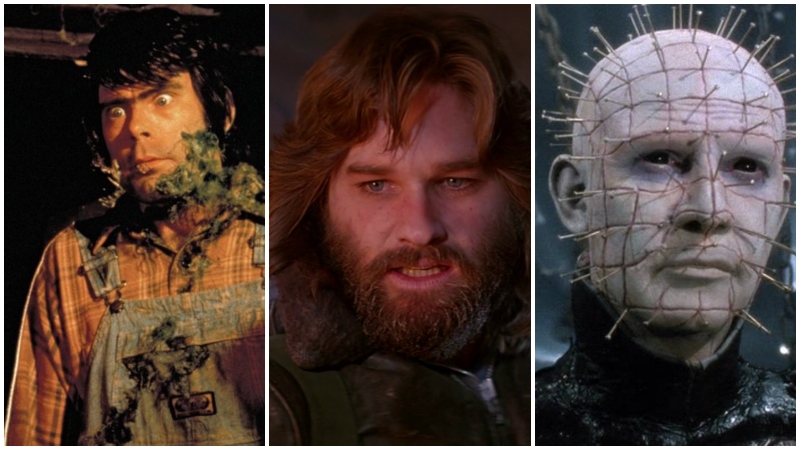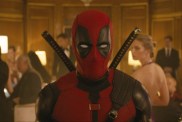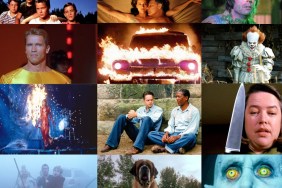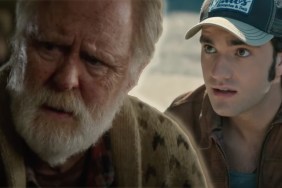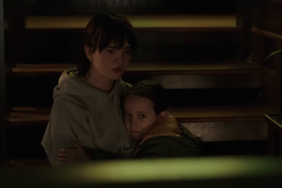Movie titles matter. Just because a film is adapted from a work of literature doesn’t mean it gets to keep its title. Nothing Lasts Forever just doesn’t pack the same action-blockbuster title punch as Die Hard, but both Roderick Thorp’s 1979 novel and its 1988 film adaptation tell the story of off-duty NYPD officer John McClane who thwarts the diabolical plans of German terrorist Hans Gruber in a Los Angeles skyscraper on Christmas Eve. Everything worked out in the end, with the movie’s immense box-office success not only bolstering a young Bruce Willis into stardom but motivating fans to seek out Thorp’s original novel.
The transition from book (or short-story in some cases) to the silver screen isn’t always a pretty ordeal, with steadfast fans of the source material quick to lash out at any changes made to the original manuscript, no matter how minuscule said changes may be. Sometimes the process isn’t just aesthetically offensive, it’s downright blasphemous to the creator’s ingenuity. (You’re getting mean-mugged right now World War Z.) Other times, story-to-film is a much cleaner Hollywood undertaking; minimal modifications are made that enhance the viewers’ experience, and bits of the original text are trimmed without ever sacrificing the story’s preeminent theme (see: 2017’s IT.)
What we call something may be less important than what something actually is; movie studio executives seem to empathize with this theory, opting for a name change that is often simplified to be eye-catching and lends to word-of-mouth, all while staying true to the source material’s beating heart and soul.
Here are five classic chillers based on stories with very different titles.
1. The Thing (1982)
John W. Campbell, Jr.’s 1938 science-fiction novella Who Goes There? has been adapted to film three times, but its biggest fan base resides at the feet of horror auteur John Carpenter (Halloween, Christine). The story revolves around a doomed group of scientific researchers who uncover an alien life-form in the backdrop of the bleak, snow-hazed tundra of the Antarctic. Unlike the family-friendly, Reese Pieces-eating alien in E.T., this other guy would rather cause a raucous and shape-shift through various victims. The result is widespread panic and paranoia, with maniacal suspicion burning through the cramped corridors of the remote station like wildfire — or, more appropriately, a flamethrower. Carpenter’s spin on the gloomy tale not only supersedes the 1951 version in terms of voracious vulgarity (so much top-tier gore), its faithfulness to its literary roots surpasses that of its predecessor, right down to the infamous kennel-thing scene.
Spooky Sounds: John Carpenter Brings Back Iconic Score
2. Silver Bullet (1985)
No horror list is complete without a bloody stamp from “The King of Horror” himself. Last year was a good year for Stephen King fanatics with IT, Gerald’s Game, and 1922 garnering rave reviews from critics and fans alike. Released in October of 1985, Silver Bullet wasn’t exactly regarded as a box-office phenomenon. It grossed little more than $5 million of its budget, but it did earn three out of four stars from the late Roger Ebert, which is kind of a miracle all in itself. The film, like so many other underrated gems, gained a cult following and is thus regarded as one of the better King adaptations. Both Silver Bullet and the book it was based on, Cycle of the Werewolf, take place in the fictional town of Tarker’s Mills, Maine, with wheelchair-bound Marty Coslaw as the paraplegic protagonist who positions himself (and his family) in the wiry crosshairs of a vengeful werewolf.
3. Hellraiser (1987)
When the author of the original story decides to embark on his first directorial effort, the margin for error and disloyalty become substantially smaller. After all, who knows the heart of the story like its creator? Writer-turned-director Clive Barker brought his book The Hellbound Heart to life through the Cenobites, a band of leather-clad, sadomasochistic, extra-dimensional beings whose carnal exercises know no bounds. Summoned via the tinkering of a malevolent puzzle box known as the Lemarchand Configuration, the Cenobites seek to reclaim the one soul who escaped their extremely raunchy forms of sexual gratification/torture. Frank Cotton is a hedonist who received more than he bargained for in his quest for unquenchable pleasure. Frank is such a jerk that even a bunch of demonic sex monsters end up looking like antiheroes when the dust settles and the lube dries.
Multi-talented Director: Clive Barker Contributed Paintings to Chilling Adventures of Sabrina’s Set Design
4. The Innocents (1961)
Halloween lies just over the horizon, racing towards us faster than masked children down suburban streets with bags of candy in tow. Werewolves will howl. Vampires will bite. Ghosts will boo. Creepy kids will…well, creepy kids will be creepy. At the behest of a disinterested uncle, a young governess (unnamed in the book The Turn of the Screw but referred to as Miss Giddens in the movie The Innocents) is tasked with caring for two children, a boy and girl, after their parents’ untimely deaths. Derivative gothic-horror at its finest, both Henry James’ 1898 novella and the 1961 film adaptation harbor layers of nuance that still has critics divided to this day. The supernatural events that ensue can be interpreted in two different ways: the governess’ sanity is compromised, leading the viewer to believe that transpired events are delusions projected from the crumbling psyche of a young woman gone mad. Or, the haunting is legitimate. It’s really just a lose-lose for the protagonist, with two elucidations that ultimately converge and conclude with the same tragic consequence.
5. Creepshow (1982)
The source material for Creepshow is not a novel nor a novella, but rather two short stories, Weeds and The Crate, featured in separate men’s magazines during the ‘70s. The stories serve as heralds to the then-blooming brilliance of horror maestro Stephen King. Scan through the pages of early King works and you’ll discover a certain visceral quality in the author’s storytelling process. Each page drips with unrefined, devil-may-care disposition. Both Weeds and the story’s movie counterpart (presented as the second sequence in Creepshow and titled “The Lonesome Death of Jordy Verrill”) depict a harmlessly naive backwoods farmer (played by none other than King himself) who discovers a meteorite and hopes to profit from its arrival. Unbeknownst to ignorant Jordy, the space rock harbors a plant-like organism that spreads rapidly, overtaking anything (or anyone) with its all-consuming alien vegetation — something poor Jordy learns the hard way.
The Crate centers around the discovery of an old wooden crate (imagine that) beneath the basement stairs at the zoology department of Horlicks University. A beastly terror resides within the box and it’s a creature whose insatiable lust for blood is used as an incentive for Henry Northrup to rid himself of his verbally abusive, alcoholic wife. Unlike Weeds, The Crate ends on a somewhat happy note, but happy in a really, really dark way. Would you really expect anything less from King? The guy practically spews sunshine and rainbows in every one of his works.
